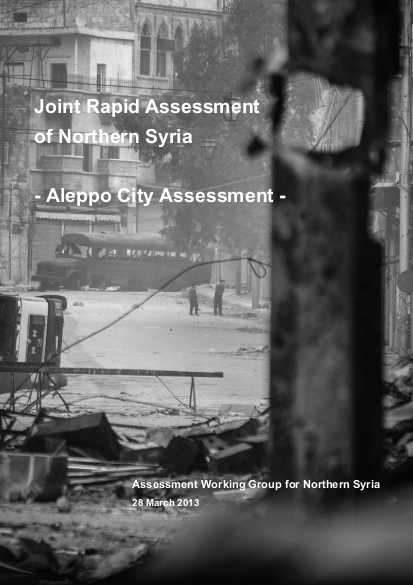
This survey covered 52 of the 125 neighbourhoods (42%). This area represents 70% of the pre-conflict population of Aleppo City and has currently an estimated number of 2.5 million people. Of these people, the assessment found:
- 2.4 million people are living in areas that are in urgent need of humanitarian assistance
- 510,000 have been forced from their homes
- 2.4 million people have insufficient access to health services
- 2.2 million people are borderline food insecure
- 2 million people are facing challenges to access adequate shelter/NFIs
- 240,000 people are lacking sufficient access to water
The Joint Rapid Assessment in Aleppo City (henceforth referred to as Aleppo City Assessment, or ACA) was undertaken over a two-week period in March 2013. The key purpose of the ACA was to provide strategic information on needs, key affected population groups, priority sectors for intervention and to determine where assistance is reaching people. The assessment was coordinated by the Assessment Working Group (AWG) for northern Syria. The assessment was a collaborative effort between a range of humanitarian actors, supported by ECHO, DFID and OFDA and facilitated by the Assistance Coordination Unit (ACU). International needs assessment and GIS experts provided technical support.
Links
Resource collections
- Evaluating humanitarian action
- Monitoring and Evaluation (M&E)
- Monitoring of humanitarian action
- UN Habitat - Urban Response Collection
- Urban Response - Urban Crisis Preparedness and Risk Reduction
- Urban Response Collection - Community Engagement and Social Cohesion
- Urban Response Collection - Economic Recovery
- Urban Response Collection - Environment and Climate Change
- Urban Response Collection - Housing, Land and Property
- Urban Response Collection - Urban Crisis Response, Recovery and Reconstruction
- Urban Response Collection - Urban Resilience
- Use of evaluation evidence